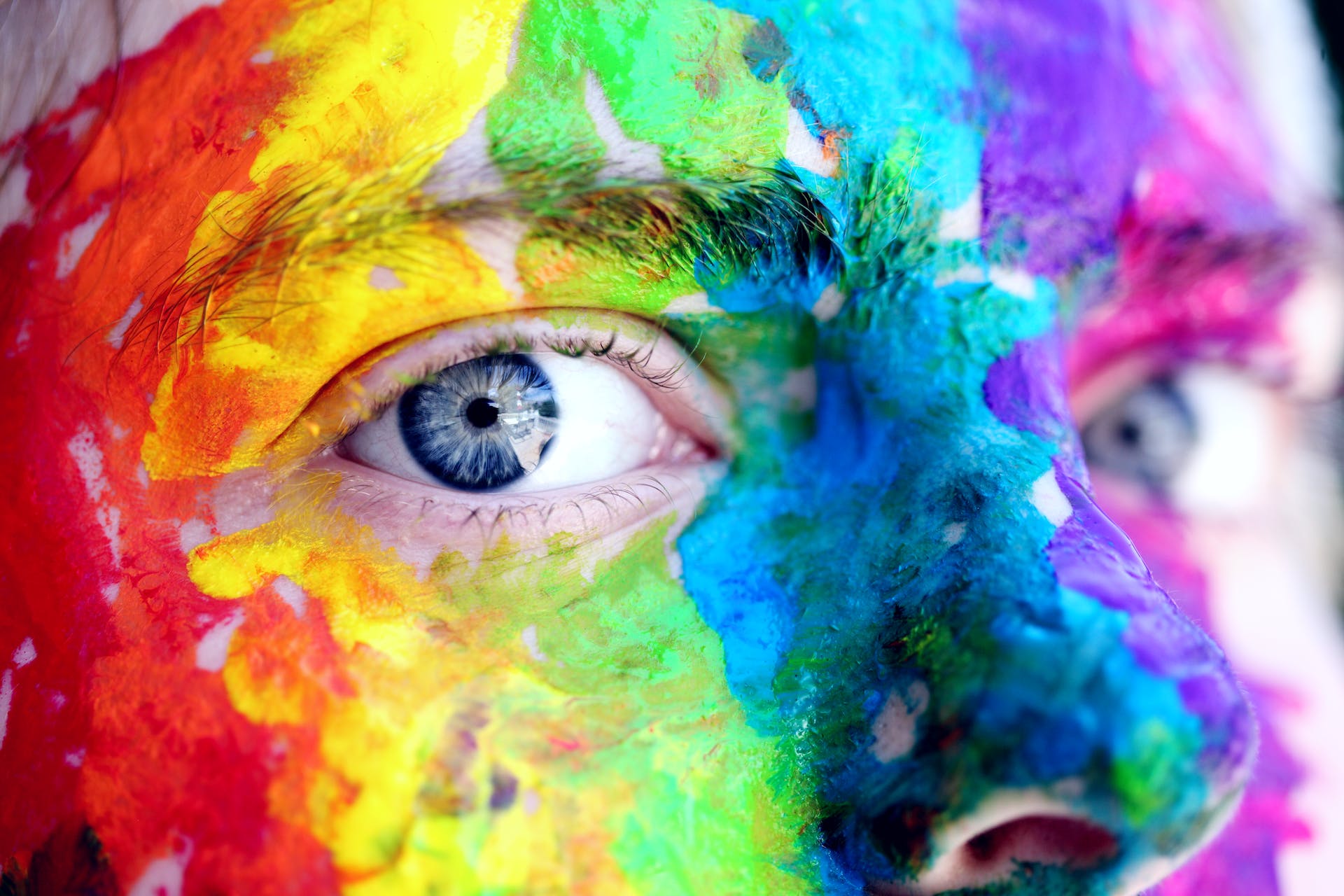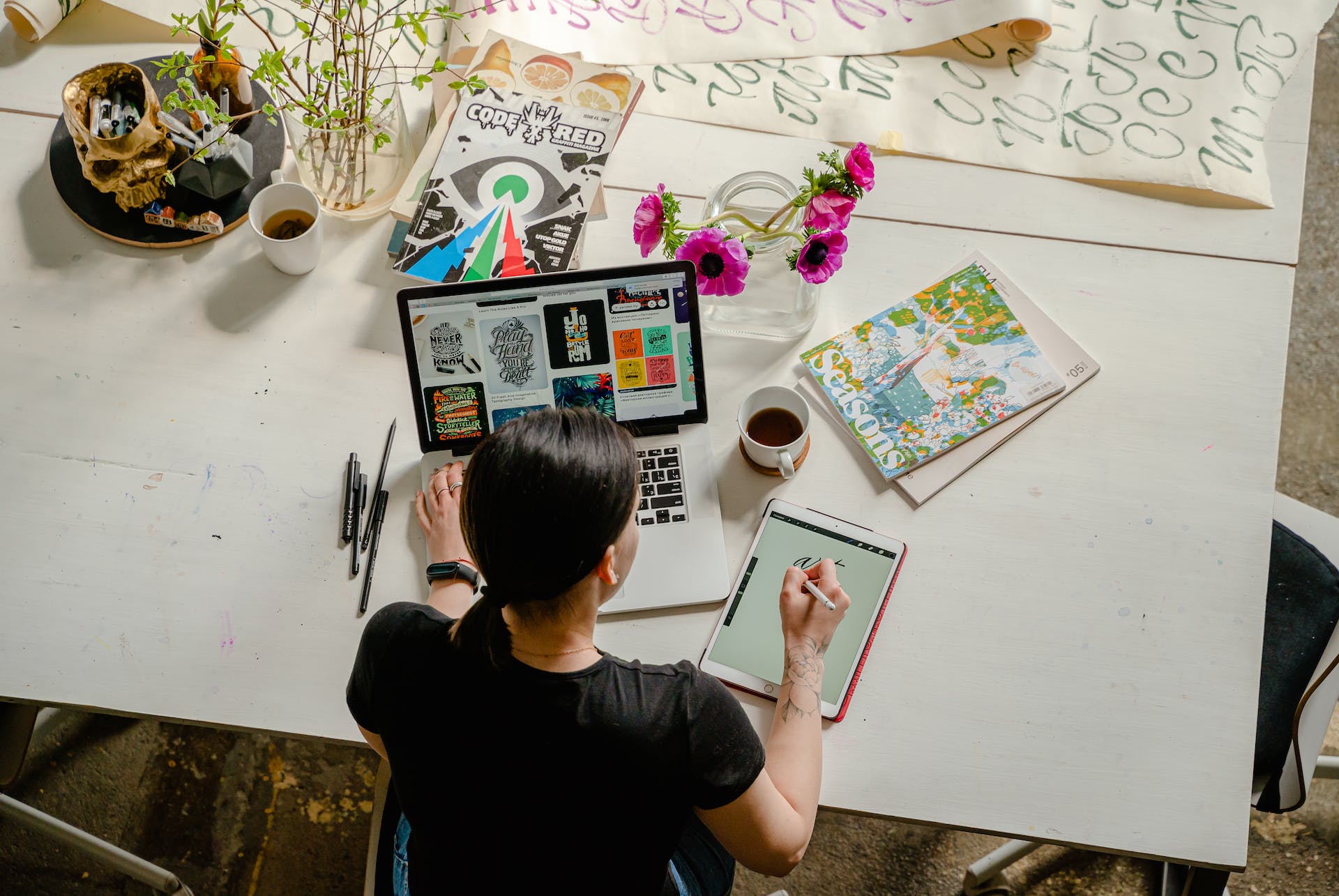Your cart is currently empty!
-
Microdosing and the Creative Mind: A Guide to Unlocking Your Artistic Potential

What makes some of us more creative than others? Genetics may have an influence on our creative output as well as our upbringing. But what if there was a way of unlocking (more of) your artistic potential? Emerging scientific evidence suggests that microdosing of psychedelics may hold the key to unlocking artistic minds even further. Here is everything you need to know.
What is Microdosing?
Microdosing describes the practice of taking a tiny dose of a drug to benefit from some of its effects while avoiding stronger or unfavorable side effects. Microdosing is commonly used in drug development and pharmacology to study the pharmacokinetics of a certain drug. In this context, microdosing has been thoroughly studied and researchers follow standards established by bodies like the U.S. Food and Drug Administration (FDA), the European Medicines Agency (EMEA), and the Japanese Health, Labor, and Welfare Ministery (MHLW). Since 2009, there is an international guideline that defines a microdose as 1% of the pharmacologically active dose.
When it comes to the use of psychedelics, microdoses are not as clearly defined or regulated. Psychedelic and pharmacological microdoses have some things in common, including the fact that the dose is a so-called sub-threshold dose, meaning it is not strong enough to produce hallucinogenic effects.
Microdosers of psychedelics currently seem to be using between 5% and 10% of what would be considered an active dose. This is higher than pharmacological microdoses but still low enough to avoid tripping. The two most common substances used for microdosing are lysergic acid diethylamide – better known as LSD – and psilocybin, the psychoactive substance in magic mushrooms.
Psychedelics and Creativity
Humans have been using small doses of psychedelics for centuries. Historians found evidence of psychedelic use in the ancient Aztec civilization. The Aztec people used sacred mushrooms to treat rheumatism and fever. Aside from medicinal use, creativity and psychedelics also have a long-standing connection.
Historical Use of Psychedelics for Creative Purposes
The Aztecs’ records describe the hallucinatory effects of the mushrooms, but to the best of our knowledge, they made no connection to creativity. Early in the 20th century, interest in psychedelics grew with the discovery of LSD by Albert Hofmann. Hofmann was the first to ingest LSD in the 1940s, setting in motion a period of cultural and scientific exploration that lasted nearly three decades.
Effects of Microdosing on Creativity
Throughout the 1950s and 60s, anecdotal evidence of the beneficial effects of LSD on creativity continued to grow. The use of psychedelics is said to have allowed some of the leading artists of the time to expand their work. Bands like The Rolling Stones, Pink Floyd, and The Beatles used psychedelics to create unforgettable songs.
Writer Aldous Huxley’s works show a clear influence of experiments with psychedelic substances. But the effects were not limited to artists. Entrepreneurs like Apple’s Steve Jobs found them to be beneficial, too. Jobs has been quoted acknowledging that taking psychedelics was among the most important things he has done in his life.
Scientific Studies on the Effects of Microdosing and Creativity
Scientific research into the use of psychedelics all but stopped during the 1970s and 80s as governmental regulation limited their use. Over the past few years, this trend has been reversed, producing a growing body of research that suggests microdosing has wide benefits for creativity without virtually any downsides.
To study the effects of microdosing, researchers had to look at what happens in human brains when our creative output increases. There is no true creativity center in the brain, but humans use two main types of thinking – convergent and divergent. Convergent thinking is a largely linear process focused on finding one solution for one problem. Divergent thinking, on the other hand, tends to be associated with thinking outside of the box and increased creativity.
Some scientific studies are now showing that psychedelics enhance divergent thinking while limiting convergent brain activity. One way of thinking about these results is to assume that microdosing takes the brakes off human imagination and allows artists to explore ideas they may not otherwise have had.
A recent study supported by the Dutch Psychedelic Society found that both convergent and divergent thinking were enhanced by microdosing. The scientists concluded that psychedelic substances optimized the balance between “cognitive persistence and flexibility.” This is not necessarily contradictory to enhanced creativity as convergent thinking supported focus and concentration.
Two other Dutch studies looked into the phenomenon of unlocking a person’s creativity or artistic potential with psychedelics. They concluded that while creative thinking overall retained similar levels, certain constructs of creative thinking changed in test subjects over time.
Immediately after taking psychedelics, participants had more spontaneous creative thoughts, but their deliberate creative thinking was reduced. One week after their microdose, users came up with more novel ideas – a measure for increased creativity. The initial conclusion is that psychedelics may “temporarily disrupt” the balance between deliberate and spontaneous creative thinking. Over time, however, this disruption may create new pathways in the brain, leading to enhanced creativity.
More research is still needed to back up anecdotal findings with comprehensive scientific evidence of the potential of psychedelics.

Benefits of Microdosing for Creatives
Stepping away from science, let’s take a closer look at the benefits of microdosing for creatives that we know about, both anecdotally and thanks to scientific evidence.
The main benefits of microdosing for creatives include:
- Increased focus and productivity: with microdosing, distractions are less likely to interrupt the work of creatives, helping them stay focused for longer periods and resulting in better outcomes.
- Heightened senses and perception: seeing or hearing more than you previously did helps inspire new ideas and truly different creations. Microdosing allows artists and others to experience their thoughts and the objects in front of them in a different light.
- Enhanced imagination and creative flow: imagine being able to arrange musical instruments in an innovative way that no one had thought of before. Microdosing allows artists to expand what they thought of as the boundaries of their imagination and removes blocks to creativity.
Microdosing and Artistic Forms
Let’s take a closer look at different forms of creativity and how microdosing can support those.
Writing and Storytelling
According to anecdotal evidence, microdosing can be a powerful tool for overcoming writer’s block and achieving a state of flow more regularly. Some writers also reported that psychedelics allowed them to stay focused for longer and develop the small details of a text to a higher level.
Visual Art and Design
Visual artists could benefit from both enhanced convergent and divergent thinking.
Increased divergent thinking opens the door to truly new, out-of-the-box ideas, while convergent thinking supports the finishing touches of small details of a painting or an intricate design. Some reports also suggested that microdosing helped visual artists go easy on themselves and develop their work rather than allowing their inner critic to curtail it.
Music and Sound Production
Some of the biggest names in music are known to have experimented with psychedelics. We may not be able to prove that psychedelics were the driving force behind the distinctive sound of The Beatles, but it is probably safe to say that these substances helped draw out new ideas that may otherwise have been lost.
Sound production is a combination of big ideas and extreme attention to detail, also known as divergent and convergent thinking. Microdosing can support and enhance creativity in both of these areas.
Microdosing for Creativity: Guidelines and Best Practices
Microdosing is generally considered to be safe, but there are still a few guidelines and best practices for artists to follow to enhance their creativity without any detrimental side effects.
- Dosage guidelines: begin with the lowest possible dose because humans react differently to medications and other substances. Psychedelics are no different. A dosage that may show no effect in one person could already be too much for another. Take a small dose and wait for its effects to develop. Avoid rushing into larger doses which may have significant side effects.
- Choose the right substance for you: different substances can have different effects, making it important to research psychedelics before using them. Try to learn as much as you can to ensure your goals align with the known effects of your chosen substance.
- Best practices for microdosing: Find a trusted source for your microdoses. Nearly 200 species of mushrooms produce psilocybin, but some of them are poisonous. They may look like harmless species, so it is critical to be sure of the species you’re taking. Otherwise, you could be risking liver damage, severe illness, and even death. It also helps to start with a specific goal in mind. Whether you are looking to increase creativity or reduce anxiety, a clear objective makes it easier to measure progress.
Integration practices
Microdosing and psychedelics don’t exist in a vacuum. Instead, microdosing can be integrated seamlessly with other transformational practices like mindfulness, somatic breathing, and other breathwork practices, as well as yoga and plant medicine.
So how can you start developing a microdosing practice as a creative? One of the most popular microdosing protocols is known as the Fadiman Protocol after researcher and author James Fadiman. Fadiman suggests using a schedule of one day on, and one day off to allow microdosing beginners to distinguish between days when they are using psychedelics and days when they don’t.
Starting slow is one of the best ways of establishing a new habit and integrating it into your daily routine. Small changes are easier to make and therefore more likely to develop into lasting habits. Plus, remember that microdosing isn’t a sprint. Instead, the practice is about embracing a creative transformation, long-term personal growth, and the expansion of your artistic potential.

Microdosing and Self-Care for Creatives
Microdosing can also contribute to an artist’s self-care routine – or help establish healthier, more beneficial habits.
Managing Mental Health with Microdosing
Current research suggests that microdosing psilocybin and other psychedelics may help control mental health conditions like depression and anxiety. In some of those studies, psilocybin was found to enhance participants’ mood not only momentarily but that those improvements were sustained over a period of time.
Research into psychedelics is flourishing, with scientists exploring contexts of mental health, creativity, and other areas. Some believe that these substances have the potential to revolutionize mental health care once they are understood better.
Balancing Microdosing with Other Self-Care Practices
If you’re following the Fadiman protocol of microdosing one day on, one day off, it’s a great idea to turn your microdosing days into self-care days.
Many microdosing enthusiasts find that psychedelics increase their energy. Channeling some of that energy into exercise could help establish a fitness routine alongside your microdosing regime. In this context, exercise could be anything from high-intensity runs to gentle yin yoga.
Meditation is another self-care practice that balances well with microdosing and supports creative output. The mental clarity derived from meditation gels well with the energy and stimulation delivered by microdosing, opening new opportunities for creative thought.
Minimizing Potential Downsides to Microdosing
Microdosing is generally considered to be safe, both according to anecdotal and existing scientific evidence.
Start slow and follow our guidelines above for the best possible experience. Take the time to get to know your reaction to various psychedelics and don’t be afraid to try different protocols. You might be surprised by the wide range of effects different substances have on your creative output.
Final Thoughts
Microdosing has the potential to enhance overall creativity, remove creative obstacles like writers’ block, and it could unlock a person’s entire artistic potential. Taking psychedelics in small doses can also help reduce anxiety and benefit overall well-being. While there is limited scientific research available, microdosing is generally considered to be safe for creative minds if users follow established best practices and allow their creativity to unfold gradually.
